Home › Forums › Friends of FOC › FOC arrows of differnet tribes
-
AuthorPosts
-
-
I have been thinking too much recently after reading the FOC data and the mention of PNG tribesman. So i am wondering has anyone found any info on the FOC arrow specs for Native American tribes here in the US since it seems all the historical pictures i have seen showed they used a bit more feather than the PNG tribesman. I am curious if this is an artifact of area they lived or other reason is all.
-
How many hundreds of tribes were there, scattered across the continent, when Columbus invaded the Americas? That’s how many different arrow styles we might expect to have existed. Museum specimens and historical paintings, some of which show not great penetration of arrows dangling from running bison–suggest that horse-mounted Plains Indians used fairly short arrows with small “bird” points, which suggests low FOC, thus perhaps the larger fletchings. Nor would arrows have been nearly so straight and uniform in spine and weight as today, also necessitating more rear-end steerage. Their technique when running bison and other large animals was, apparently, for an individual rider/hunter to pick a victim and stick it repeatedly with arrows, like a pincushion, until it bled out and went down. I’ve never seen a picture or reference to N. American Indians using the extremely long arrows so common in S. America and elsewhwere. Obsidian isn’t all that heavy, nor were trade points. But all of this is speculation based on a small sampling of evidence. I would be more interested in knowing how woodland Indians of the East set up their arrows, since they were largely hunting deer and hunting often alone, which better parallels how we hunt today, our concern for good blood trails, etc.
-
My grandfather used to collect arrowheads. At his passing there was something like 6 washbasins full of points he had picked up while plowing the thousands of acres he farmed. The man was unreal. I’ve seen him stop plowing right in the middle of a thousand acre field to pick up a head he saw.
The heads ranged in several different sizes. Most were small, not much bigger than the first joint of your little finger. Others were big as two finger side by side.
He even had afew spear points that were as much as 6″x2″.
I always called the two finger sized points, atatalla (sp) points. He always said they were deer points used by one big indian. Then he would laugh.
Troy
-
Dave, i was thinking about the East Coast tribe like you mentioned and how they were similar or different to the PNG tribes in hunting style. After all i was thinking that and it maybe wrong but for the PNG tribe since they deal with less wind or not able to find a suitable feather as to they evolved there arrow to be so EFOC. However the eastern tribes dealing with a more open wooded area, needed the feathers of a certain size to operate effectively out to a further difference. I even wonder about the pacific northwest natives and what type of arrows did they use for there rainforest and how much FOC. I am curious due to wondering what worked so well for the Native tribes here and getting them a good clean kill and the results they had.
-
“Primitive” EFOC/UEFOC arrows show up in various parts of the world.
Philippines
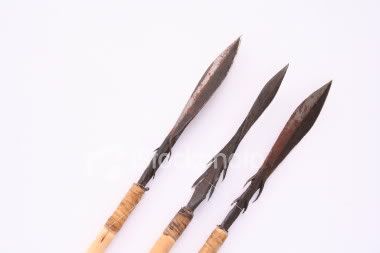
East Africa
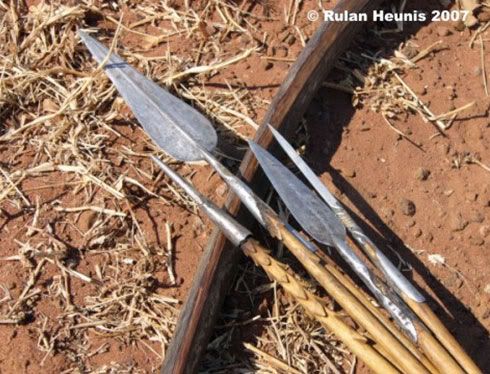
PNG

Asia
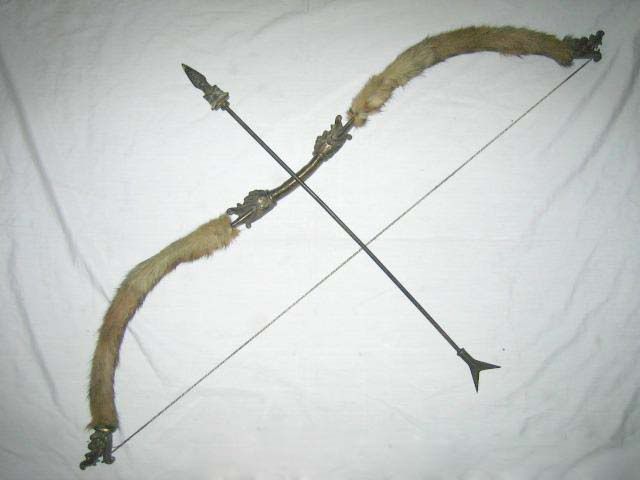
The only (reputedly) authentic EFOC American Indian arrow I’ve been able to measure, at a small museum in Alabama, was cain shafted with a point a bit over 3″ long (including the tang)and about 2″ wide. It was a bit over 25% FOC.
Ed
-
Not wanting to hijack this thread, but, Dr. Ed have you ever looked at the arrows used by the English Longbowmen in the wars such as with the French? With those bodkin type heavy points the FOC of those arrows must have been great with the ability to go thru chain mail and armor at over 200 yds !!! I wouldn’t have liked being on the receiving end of that “Scourge of the Grey Goose” !!! Bullseye
-
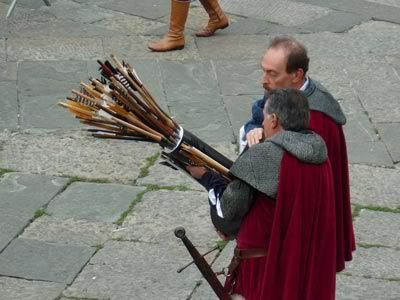
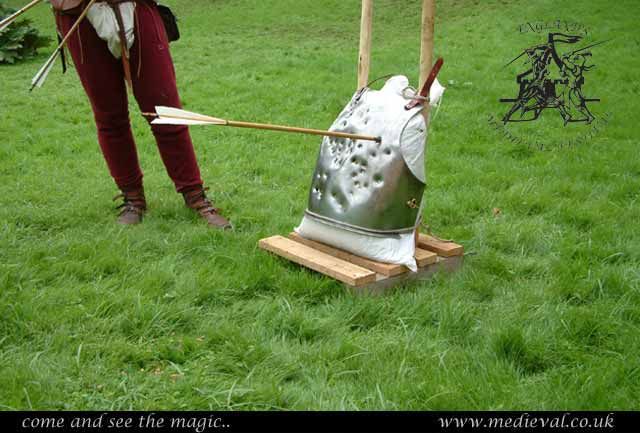
Unless you’ve seen them first hand it’s difficult to grasp just how massive the English, so-called, quarter pound, armor-piercing war arrows were. Not only do they have points weighing several hundred grains the shaft is at least ½” in diameter at the front, with the rear section tapering to 3/8” diameter. The tapering starts just forward of the fletching’s leading edge. I’ve never had the opportunity to measure a genuine sample but the recreations I’ve seen, used by reenactors, showed FOC’s that were in the high FOC range, but not into the EFOC range. The massive shaft weight keeps them from showing extremely high FOC’s. They relied primarily on their near (and frequently over) 2000 grain weight for their penetrating power.
Ed
-
Primitive Archer mag (hope it’s ok to reference that here) has an article in their current issue about the Selk’nam tribe of Patagonia. Their arrows used fletching cut to a length of 5 centimeters (1.9″). Average overall arrow length was 60- 80 centimeters (23″ – 31″).
It’s interesting that they chose to use such short fletching, given that they used the feathers of a large native goose, which could have offered longer fletching options if needed.
Unfortunately, the article does not go into any FOC specifics of Selk’nam arrows, but it would seem that they must have used a decent amount of FOC in conjunction with such minimal fletching, particularly since the article states that they could accurately hit targets up to 200 meters with this set-up.
Another example of un-traditional thinking that doesn’t work? 🙄
(Selk’nam fletching and points:)


-
Smithhammer wrote: Their arrows used fletching cut to a length of 5 centimeters (1.9″). Average overall arrow length was 60- 80 centimeters (23″ – 31″).
It’s interesting that they chose to use such short fletching, given that they used the feathers of a large native goose, which could have offered longer fletching options if needed.
(Selk’nam fletching and points:)

Even at the very short feather length it appears that those arrows have only 2 fletches. Shame they didn’t look at arrow FOC.
Ed
-
The article said that pre-European contact, they used stone (unspecified, but many of those pictured appear to be obsidian), and that post-contact they started using glass instead, which is what we’re seeing in that pic. Hard to imagine getting much FOC out of a glass point, but I wish they gone into in a little more detail, and measurements, on that.
-
Shafts were made out of a shrub wood called calafate (Berberis microphylla).
-
-
AuthorPosts
- You must be logged in to reply to this topic.

